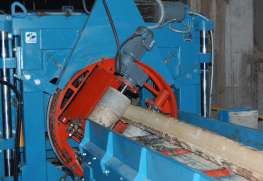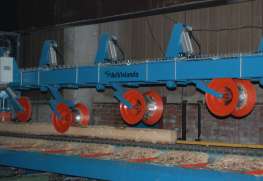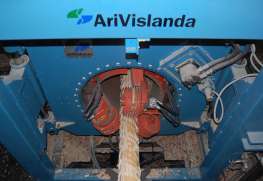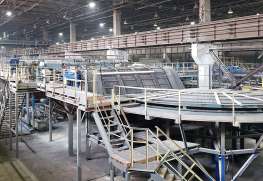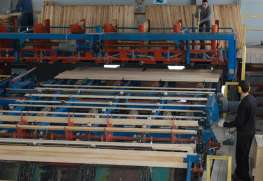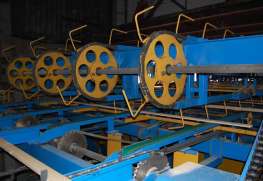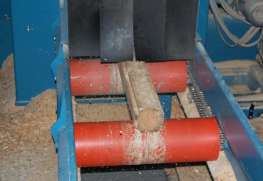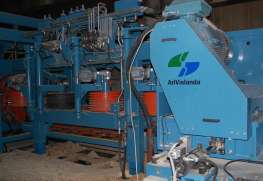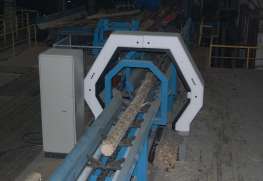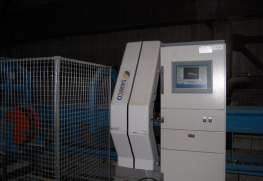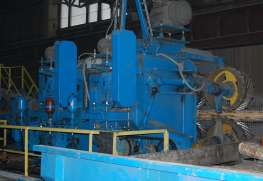In 2009 the company completely up-dated the sawing hall and installed a brand new sawing line manufactured by the Swedish producer «AriVislanda».
ProOpt second generation (2G) optimization system allows optimizing not only cutting patterns but also log turning angles, and an alignment position for each log or cant. Due to the automation and optimization of the sawing line, several diameters can be cut simultaneously, and this ensures maximum production yield.
Sawlogs are brought by log loaders onto the reception table in the sawing hall, and further on move down the infeed conveyor through a metal detector and a 1D scanner determining the top and butt of the log. Turned logs go top forward into the debarking machine.
While removed bark is taken out of the sawing hall, chipped, and transported to the fuel bunker in the boiler house, debarked logs go further onto the sawing line. Prior to entering the primary machinery zone, logs pass through Pro Scan, a 3D scanning device, determining log geometry, automatically optimizing the cutting process, following logs at all stages of the treatment process, and sending signals in due time to the operation units.
Primary machinery includes:
1. Log turner LT-2 that rotates the log to an optimal position ensuring the most effective log cutting.
2. Chipper canter RL-600 that is a reducer intended for making two-sided cants.
3. Sawcommander QSS700L that breaks the cant down into four sideboards with two boards on the right and two boards on the left. While the side boards go into the edge trimmer, the two-sided cant enters vertically the cant turner CT-2, rotating the cant to a horizontal position.
In this position, the cant gets into the secondary machinery zone: first into the cant infeed CI-6 and then into the chipper canter RC 600, which produces a four-sided or profile cant that goes straight to ARI DS-74+1+2 to be broken down into edged boards. The boards proceed onto the central boards sorting line, where they are trimmed to nominal lengths and stacked for kiln-drying.
The sawmill also produces such important by-products as pulpchips and sawdust that are highly demanded in Komi Republic by processing companies manufacturing particle boards, fiberboards, and pulp.

